During the Vietnam War, mines and booby traps caused an astonishing 15% to 28% of all casualties.
Regardless of where this figure truly lies, the fact that tens of thousands of Americans were killed or wounded by these devices proves just how much of a problem they were for American commanders.
However, for the troops in the field, these devices were much more real than just numbers on casualty reports. Troops often wrote home or said that the war’s hardest part was just finding the enemy.
This was because Viet Cong guerillas often avoided pitched battles and instead relied upon an expansive network of mines and booby traps to delay and demoralize US forces.
US military officials would later comment that what the US experienced in Vietnam was the most intense mining campaign in modern history.
But what were US troops really up against? With literally dozens of different booby traps the Viet Cong could have employed, here’s a list of 10 of the most brutal ones.
The Trap Bridge
Vietnam is covered in countless small streams, dikes, and rice paddies. Because of this, there are tons of small bridges dotting the landscape.
Most of these back then were of dubious quality or condition. But in an area with little infrastructure, they would have to suffice.
The Viet Cong took advantage of this fact and booby-trapped many of these smaller bridges. They would do this by partially sawing enough of the bridge in the middle to make it structurally weak.


VC guerrillas would then place mud over the cut to hide it. Beneath the bridge, they would lay iron spikes or sharpened bamboo stakes.
In order to conceal the obvious trap, they often dammed up one or both ends of the stream or creek to obscure what lay beneath the bridge.
The Cartridge Trap
Sometimes, the Viet Cong used more than stakes in their traps. While the infamous punji pits were covered with camouflage, hiding the stakes in a hole, the cartridge trap is similar but with a twist.
The trap is relatively tiny. Usually, the hole is no deeper than the size of a man’s foot. But that’s all that is needed, considering that a wooden board with a nail is at the bottom of the hole. On top of this nail is a piece of bamboo.

Inside the bamboo is a single rifle cartridge. When the unsuspecting soldier steps into the hole, the pressure from his foot pushes the rifle round onto the nail and shoots him in the foot.
Grenade Traps
Grenade traps were one of the most common yet brutal traps encountered by US forces. This was because these were often the simplest yet most effective traps that would be hidden almost anywhere.
The trap itself was simple enough. The safety pin on a grenade was pulled, and it would be stuffed anywhere a US soldier might be moving or looking through.
Army reports show enemy forces often hid grenades behind doorways, cave entrances, chicken coops, bunches of bananas, and anywhere else imaginable.

What made these so brutal was not only could they be anywhere, but when the tripwire pulled the grenade out of its hiding spot, the Viet Cong usually used specially made booby trap grenades with zero-second fuses.
This meant that as soon as the grenade fell out, it exploded.
The Viet Cong even developed a version for use against helicopters. VC fighters would dig a hole at a 45-degree angle.
A three-pound explosive charge was placed in the bottom. On top of this would be a wooden board with nails on it. These nails propped up grenades.
Whenever a helicopter was within a hundred meters, the operator would detonate the trap to attack the helicopter.
Face Knocking Trap
This trap is pretty nasty due to how brutally simple it is.
Instead of filling a hole with stakes, the enemy would instead have a wooden board fixed to the sides of the hole. A long, slim piece of wood connects this board to another filled with spikes.
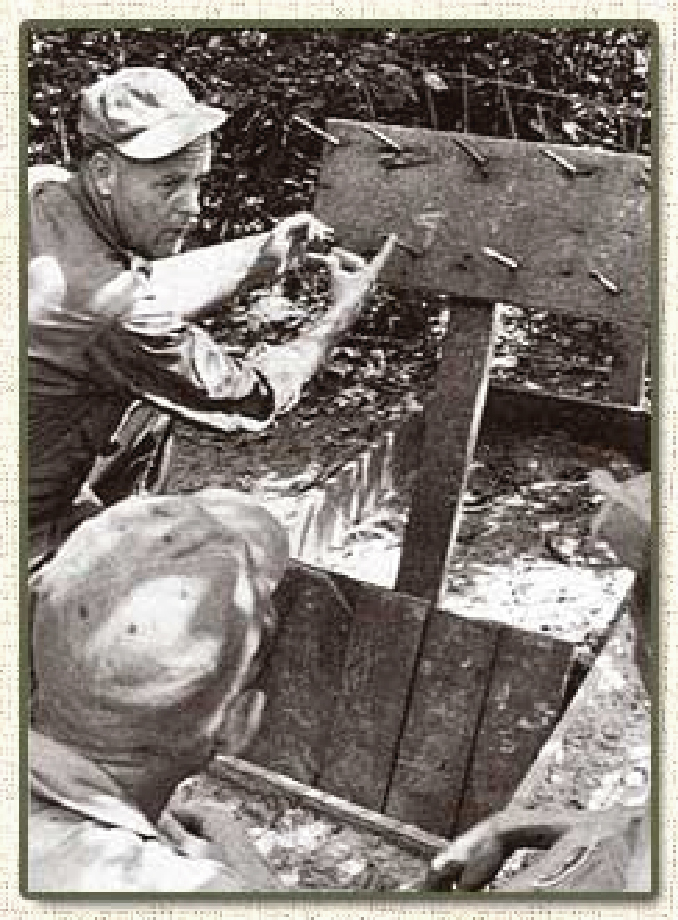
When the unwitting troop steps on the board, the spiked one flies up and impales him in the face.
Portable Concrete And Steel Punji Trap
This trap is so brutal because it combines two of the most common ones. Regular punji pits are very time-intensive and cannot be done in a hurry. This device solves that problem.
Made from a piece of concrete or a metal block, the VC would stick several iron spikes into it. After digging a quick hole about the size of a man’s foot, they would throw it in and wait for someone to step on it.

However, if a man fell into it, there was more than just a painful puncture wound waiting.
These traps would be paired with a grenade trap. The pressure from the block would be holding down the pressure release for a grenade.
When the injured man was moved, taking his foot off the trap would trigger the grenade next to it to go off.
Booby-Trapped Cigarettes And Lighters
Troops in the field often turned to a quick cigarette to wind down and pass the time.
However, if running low on smokes or if their lighter ran out of fluid, US service members had to be careful about what they picked up since it could be booby-trapped.
Two of the most common items Viet Cong troops left behind for Americans to pick up included lighters and cigarette packs.
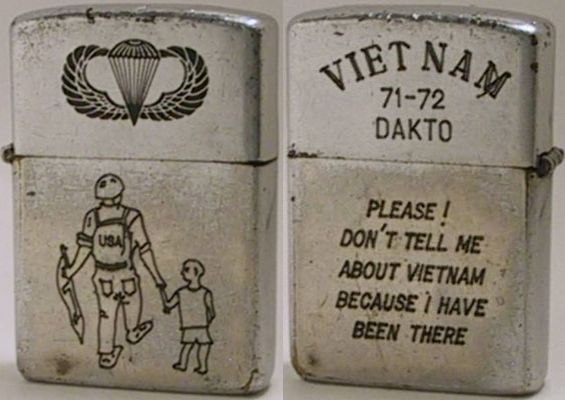
As for the lighters, the VC would place some explosives in the fuel compartment. They would then wet the wick with a flammable liquid, and when the unsuspecting troop lit a cigarette, he would unknowingly cause it to blow up in his face.
A similar tactic was used for cigarette packs. The Viet Cong painted a small metal container to look like an ordinary cigarette pack. Inside, the pack was full of explosives and ball bearings.
To detonate it, VC guerillas poured into the top of the pack. The acid then eats away at a time delay membrane that, once gone, sets off an initiating compound that detonates the main charge.
The Mace
Similar to the face knocker trap, this device is about as medieval as it sounds.
Instead of a classic metal mace used in combat from hundreds of years ago, this mace is created from a rock with between 80 to 100 sharpened bamboo stakes glued to the rock. The trap is held in place by a simple vine and stick trigger.
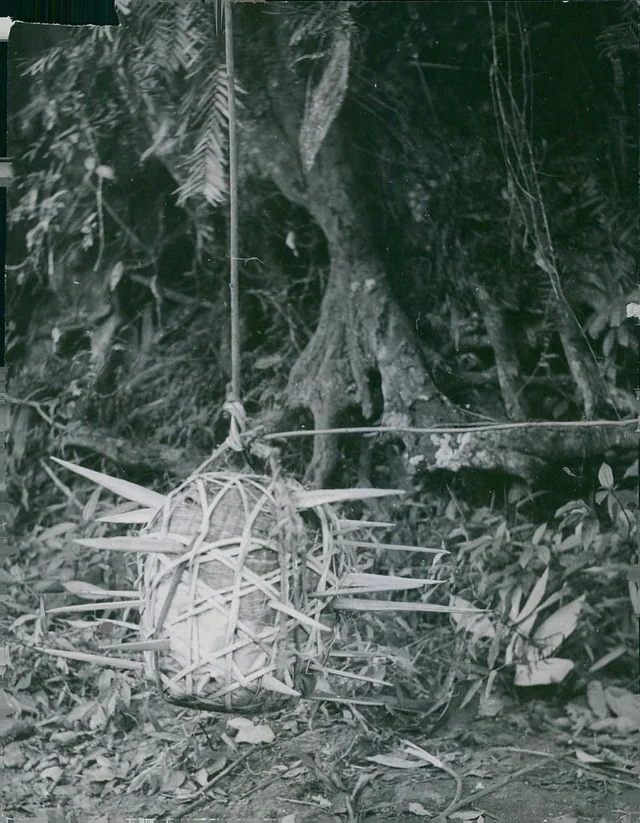
VC fighters would place a vine across the trail where the unsuspecting soldiers would be walking. When the vine was tripped, it would release the stick holding the mace in place.
The trap was usually set high up in the tree tops, about nine meters in the air, to ensure maximum damage. Once released, the mace would cut a swath of destruction through the unlucky patrol who happened to stumble on it.
Booby Trapped Bomblets
Due to the sheer amount of ordnance dropped on Vietnam during the war, there was a ton of ordnance that either failed to detonate or that American and Allied forces left behind.
As a result, up to 90% of explosive traps were used utilizing ordnance left by American troops.
One of the most common types of repurposed explosives was the BLU-3/B anti-personnel bomblet.
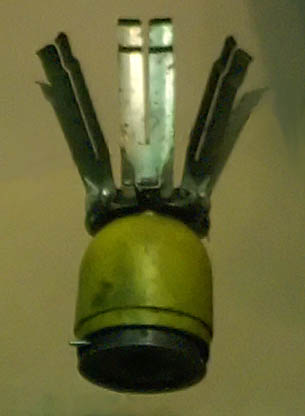
The BLU-3/B was a submunition that was part of a larger bomb meant to spread death and destruction over a wide area. The bomblet contained about 250 ball bearings, perfect for taking out personnel in the open.
However, many did not explode. As a result, VC soldiers looked for these in the jungles and created a trap out of them.
The discarded bomblet would be placed on a flat rock under a tree. Above it, they would put a long branch with a rock tied to one end and anchored at the other with a stake tied to the ground.
The stake’s loops around the other end were left purposefully loose so that an unsuspecting American could trip over it and knock off the loops.
The pendulum would then swing, and the rock would hit the exposed striker and set it off. Such a blast could easily wipe out an entire squad.
Bamboo Stakes And Mines
While punji stake pits have widely been covered in the historiography, what is not well known is that VC guerillas placed bamboo stakes in way more places than just holes in the ground.
A common tactic was placing bamboo stakes along roadsides and trailheads. The sites chosen for these places were often good ambush sites the Viet Cong intended to conduct attacks from.

If an American patrol were passing by and took fire from hidden VC, their first impulse would be to fling themselves off the road and into cover.
However, the Viet Cong expected this and would place punji stakes in areas where American troops would likely flop themselves down and impale themselves.
And if that were not bad enough, minefields often accompanied these traps. So American troops who encountered this trap would have to choose between getting impaled by a bamboo stake, stepping on a mine, or leaving cover and getting shot.
The Spear Trap
Designed for areas of dense foliage, this trap worked best on narrow trails where there was just one way in and one way out. The trap itself was relatively simple.
Three spears made out of iron or bamboo were attached to a large rock. This apparatus would be positioned above the trail at the top of a cross beam.
Once a soldier hit the tripwire, the spear holding the rock and spear combo in place would fall out, dropping it on a person’s head.
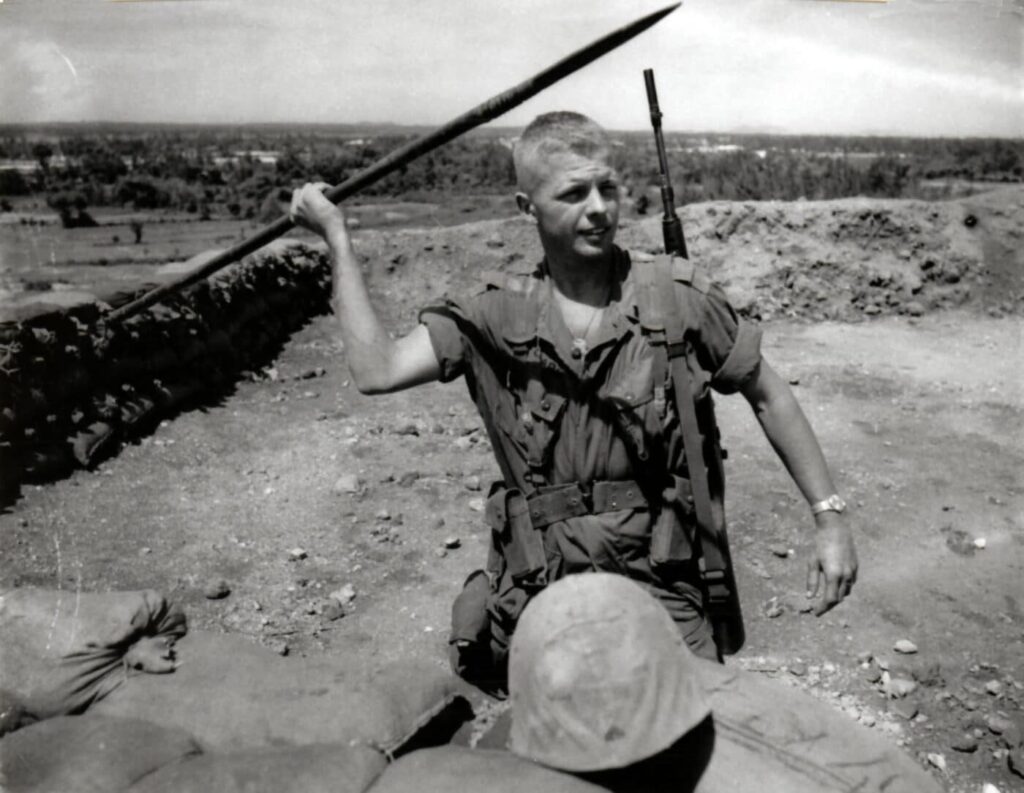
To make matters worse, Army publications warned this trap was often combined with a spear launcher trap. In the back of the trap, VC troops sometimes lashed a spear to a horizontal piece of bamboo.
The launcher is held in position by a wooden pin and a locking ring. When the wire is tripped, it releases the tension pin, and the spear flies forward.
Sources
https://archive.org/details/vcnvaemployment00unit/page/226/mode/1up
https://www.hrw.org/reports/1997/gen1/General-03.htm#P165_24535










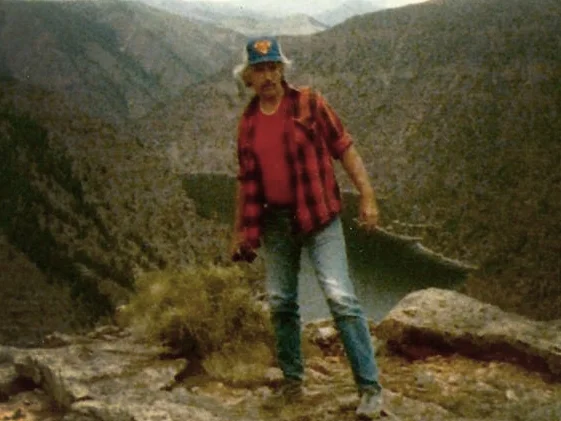


Leave a comment